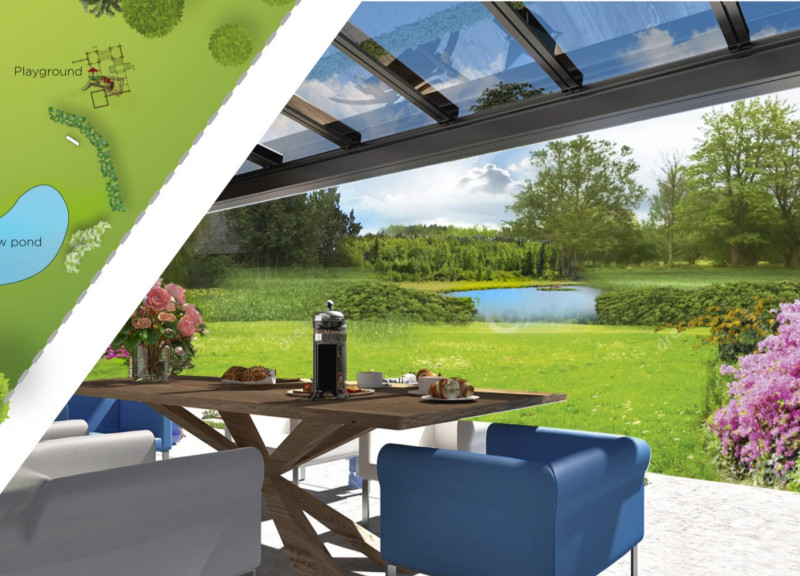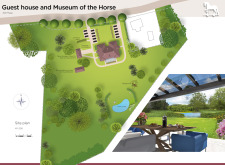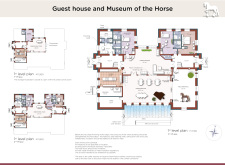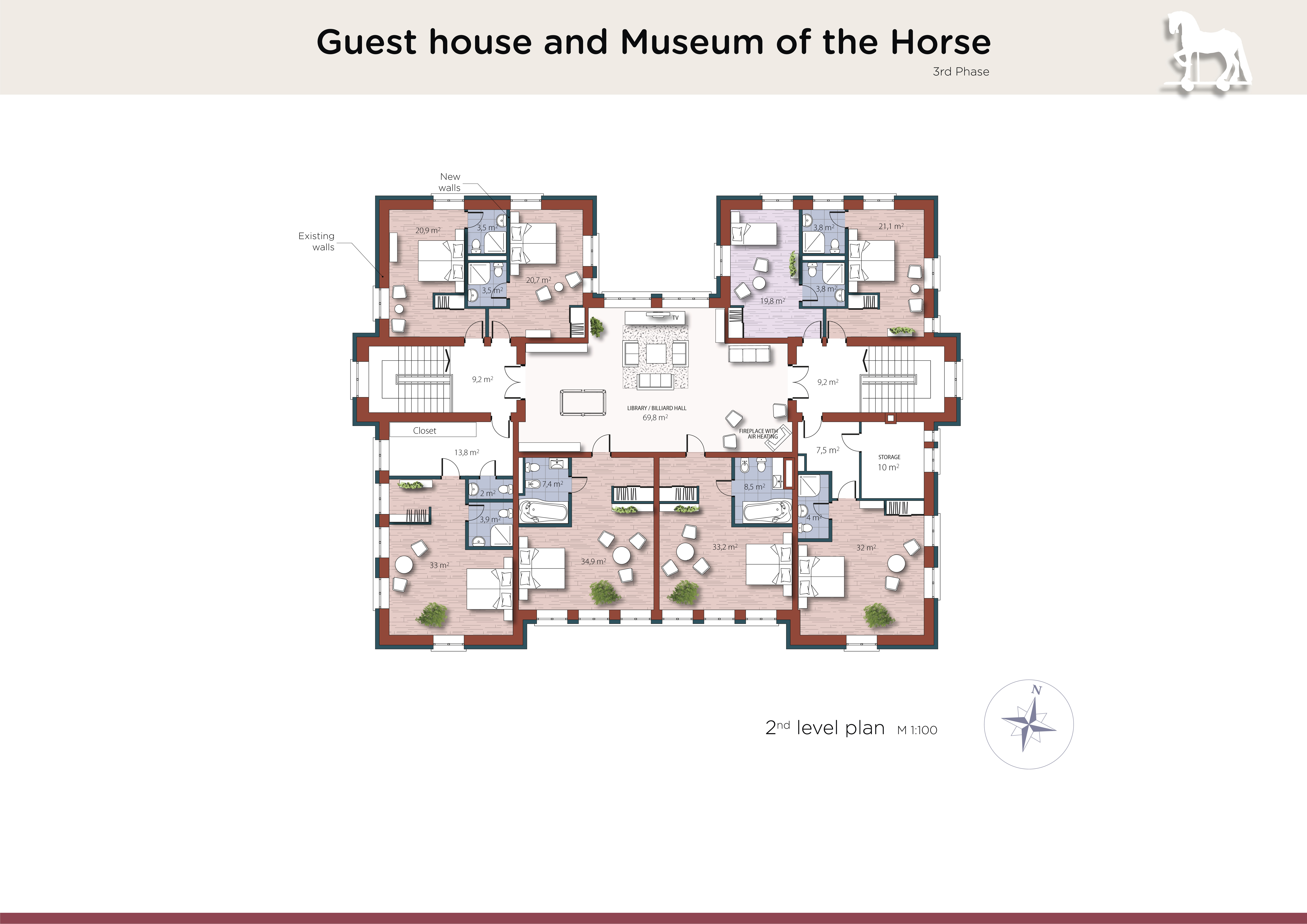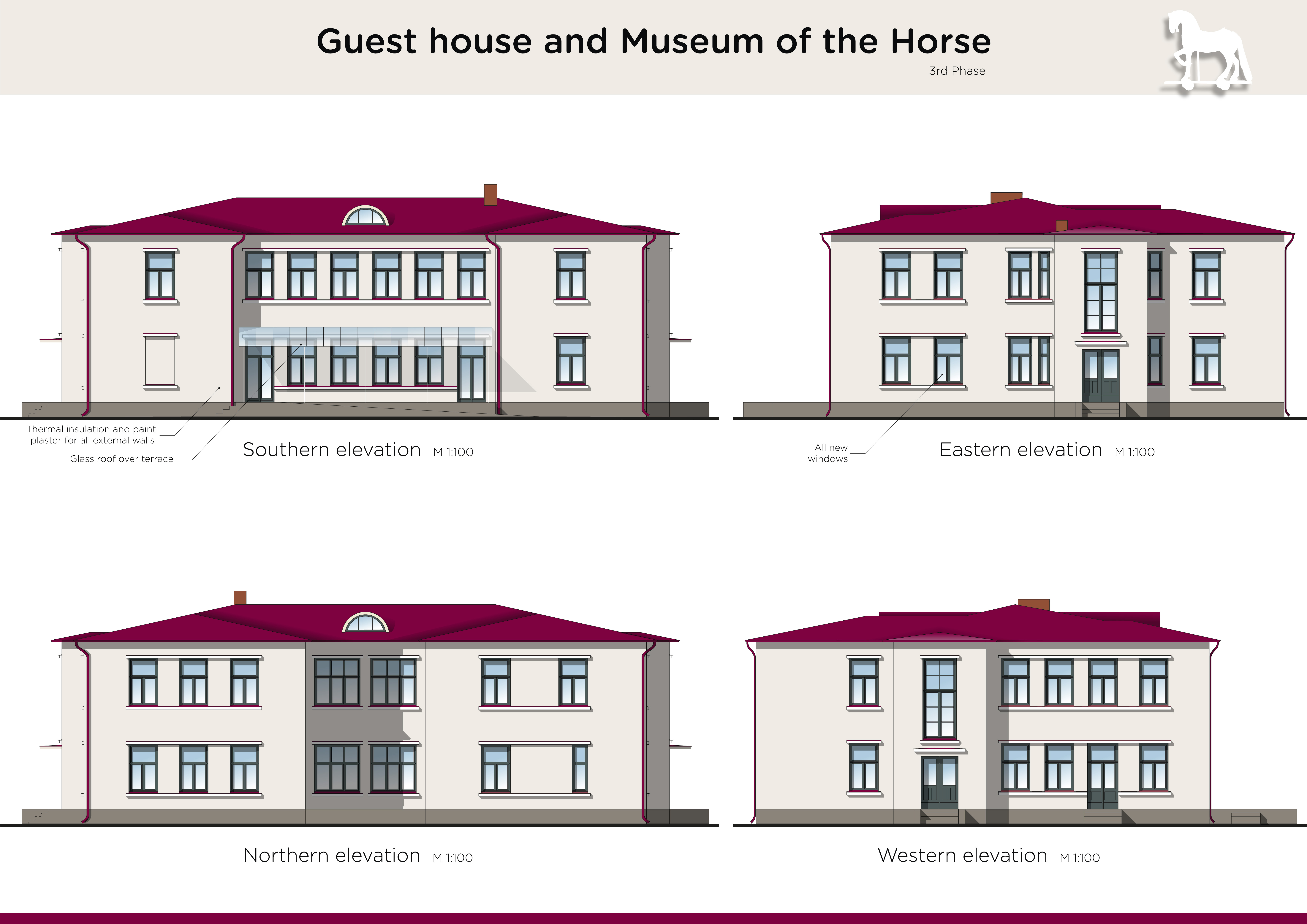5 key facts about this project
The Guest House and Museum of the Horse offers a unique approach to combining accommodation with a focus on equestrian culture. Located in a setting that enhances this theme, the design creates an inviting space for visitors to learn and engage. The project unfolds in three phases, organizing various functional areas that cater to the needs of guests while promoting interaction with the museum exhibits.
Site Plan
The site plan consists of several important elements, including an existing cellar and a new storage house intended for fuel and equipment. A separate structure is planned for exhibitions, along with necessary amenities such as garbage containers, a playground, and a pond. These additions contribute to a welcoming environment that encourages visitors to explore and connect with the landscape.
1st Level Plan
On the first level, which is designed to support diverse activities, key spaces include a workshop studio and communal living and dining areas. A public exhibition hall is included to showcase equestrian themes and history. This arrangement enables a mix of private and shared experiences, allowing for gatherings and events. Additionally, a sauna is incorporated, providing comfort and relaxation for guests.
Structural Integrity
Structural integrity and safety are significant considerations in the design. In the second phase, a thorough assessment of the building's foundations, load-bearing walls, ceilings, and roof structures will take place. Insulation will be added to the exterior walls to help with temperature control. These measures are important for ensuring the building's durability and creating a stable environment for occupants.
Elevational Design
The elevational designs provide details for all four sides of the building, emphasizing functionality and aesthetics. Thermal insulation and paint plaster are specified for the exterior walls, which will contribute to energy efficiency. A glass roof over the terrace allows for natural light to filter into the space while creating a strong connection between the inside and outside. This design element enhances the atmosphere, inviting guests to appreciate both the architecture and its natural surroundings.


